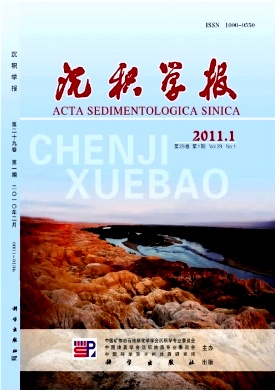Sedimentary Features, Origin and Paleoenvironmental Significance of “Great Ear” Salt Pans in the Lop Nor Playa
- Received Date: 1900-01-01
- Rev Recd Date: 1900-01-01
- Publish Date: 2011-02-10
-
Key words:
- Lop Nor basin /
- “Great Ear” /
- playa /
- salt pan /
- sedimentary features
Abstract: The majority of presentday evaporite deposition occurs in arid closed continental basins in which the playa lake is most common. The distribution of evaporite minerals and sedimentary features of salt crust are usually zonal in a playa lake. The integrated zonal configuration is preserved well in the Lop Nor playa, which is represented by a series of concentric rings that closely resemble a great human ear in satellite images. This type of natural phenomenon is very rarely seen in a playa lake. The Lop Nor basin consists of a broad, flat salt plain, and salt crusts covering approximately 5,500 km2 with the lowest parts at 780 m above sea level. After investigating the fracture texture of salt crust, sedimentary structures, evaporite mineral composition, and the condition of groundwater brine discharge in the multicyclic "Great Ear" rings, we can discuss the origin of different salt crust types, the connection between adjacent concentric zones, and the evolutionary process of the concentric configuration of the "Great Ear" salt pans. This research also gives a general overview of the sedimentary features in different cycles of saltpan evaporite, as well as the relationship between the development of polygonal fissure structures of salt crust and the groundwater brine table. The types of saltcrust structure include polygon crack, welldeveloped honeycombshaped halite crusts, moundshaped pattern and plateshaped halite crusts. However, the sediment beneath the surface is typically saturated with concentrated brines and displacive evaporites. There is visual evidence of discharging groundwater in the numerous moist salt pans covering most of the salt plain, suggesting that the capillary fringe of the groundwater table is close to the surface of the salt pans.The development of salt crust structures were generally controlled by the groundwater table with a depth of < 2m in the Lop Nor playa. But it is also affected by many factors such as sediment permeability, brine density, evaporites, cracks and atmospheric conditions.
| Citation: | MA Lichun. Sedimentary Features, Origin and Paleoenvironmental Significance of “Great Ear” Salt Pans in the Lop Nor Playa[J]. Acta Sedimentologica Sinica, 2011, 29(1): 125-133. |






 DownLoad:
DownLoad: